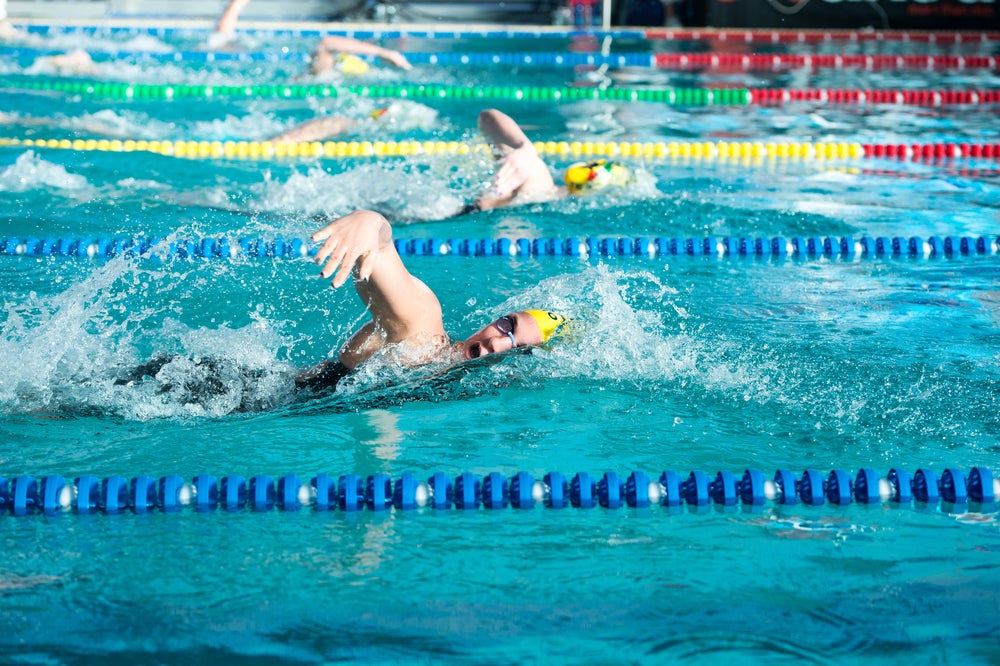Ask Coach Sara: Drills To Help With Open-Water Swimming

Photo: <a href="http://www.shutterstock.com/gallery-711961p1.html?cr=00&pl=edit-00">BrunoRosa</a> / <a href="http://www.shutterstock.com/editorial?cr=00&pl=edit-00">Shutterstock.com</a>
Your Twitter questions about swimming as a triathlete, answered by coach and professional triathlete Sara McLarty.
Q: What are some good drills to practice in the pool to help with open-water swimming? –@BrendaTeamTTF
A: Try these in the pool to simulate open-water swimming:
Tarzan drill: Swim the length of the pool with your head above water to build strength in your neck to prepare for sighting.
No Walls/Turn at the “T”: Complete a long distance swim (300–800 yards) without touching the walls. Flip or turn around before the wall and use your stroke and kick to gain momentum.
Start from Zero: Practice in-water starts with other people in your lane to simulate the contact and chaos. Tread water under the flags then sprint the length of the pool. Repeat 3–6 times.
RELATED: In Defense Of Swim Drills
Q: Is 2500 meters three times a week enough [to prepare] for Ironman? –@Celrinevan
A: The Ironman-distance swim is about 4000 meters in length. Proper preparation to successfully complete this swim should involve training 4000 meters on a regular basis in the lead-up to the race. The goal is to prepare to do more than just complete the swim portion, but complete it without struggling and with energy for the remainder of the event. Continue swimming three times per week but make one a distance swim. Increase the total distance of this swim each week until you are comfortably completing 4000 meters in one session.
RELATED: Ironman Swim Training In A Pool
Q: I struggle with flexibility in my shoulders and it affects my swimming. Any tips? –@NashvilleRyan
A: Every swimmer has a slightly different stroke technique that works best for his or her body. Adjust your technique to match your body’s limitations instead of trying to change your stroke to match someone else’s. Inflexible shoulders are a common issue for adults new to swimming. Try a wider arm entry at the top of your stroke and a lower catch under the water. Experiment to find your most efficient movements.
RELATED: Shoulder Exercises For A Stronger Swim Stroke
Q: What is more effective when pulling underwater: a slight gap between fingers or fingers tightly together? –@dpaton01
A: Try this: Put your hand out the window of a moving car and hold your fingers in different positions. The position that provides the most air resistance will also provide the most water pressure: relaxed with a small gap between fingers and thumb close. Keep your fingers pointing down and your palm facing back for a powerful underwater pull.
Pro triathlete and swim coach Sara McLarty has 25-plus years of experience and knowledge about swimming mechanics, efficiency and technique.
Got a swimming question? Coach Sara wants to help. Just tweet your queries to @SaraLMcLarty.